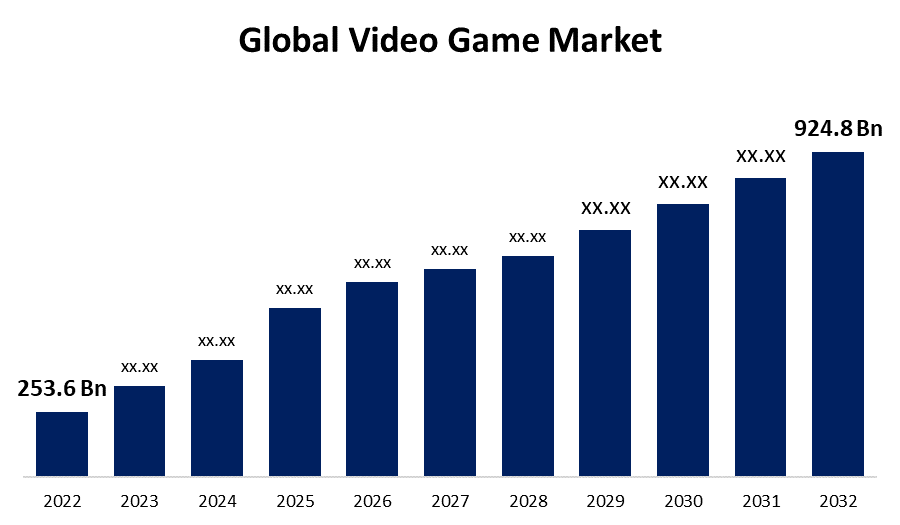The gaming industry is one of the entertainment sectors that is expanding at the fastest rate. Despite challenging economic times, it has consistently produced revenue and expanded, indicating substantial potential for further growth. People worldwide are enjoying better gaming experiences, which increases industry profits.
This blog will detail the gaming industry’s size, market share, and significant emerging trends.
Market Share and Industry Size
The gaming industry is experiencing dynamic changes driven by technological advancements and shifting consumer preferences.
Current Market Size
According to Mordor Intelligence, the global gaming market will be worth 272.86 billion USD by 2024. Numerous game genres, such as PC, console, mobile, and AR/VR games, are responsible for this growth.
More people purchasing gaming hardware and related content is the reason for the market’s growth. Faster internet access and the increasing use of smartphones globally are also contributing factors.
Market Share Distribution
The gaming industry has a diverse market share. Mobile gaming has the largest share because of the widespread use of smartphones and games designed for them. Next is console gaming, which is expanding due to many innovations.
Companies like Sony, Microsoft, and Nintendo continuously release innovative technologies and captivating video games to keep their grip on devoted gamers. While PC gaming remains popular in North America, Europe, and Asia-Pacific, AR and VR gaming show strong growth potential and are still developing.
Growth Trends
As a result of numerous technological developments that improve player experiences, the gaming industry is changing quickly.
Technological Advancements
The gaming industry consistently pushes the limits of technological innovation. Significant elements impacting the evolution of gaming experiences include developments in artificial intelligence (AI), engaging technologies like virtual reality (VR) and augmented reality (AR), and sophisticated graphics processing.
AI in game development improves gameplay and keeps players interested by enhancing game mechanics. By providing players with engaging, interactive, and well-designed environments that support their interaction with the virtual game world, AR and VR technologies open up new opportunities for improving gaming experiences.
Esports and Live Streaming
Esports, or Electronic Sports, is one of the key factors in the growth of the gaming industry. Millions of fans worldwide follow many gaming streamers, making it a rewarding and promising career choice for gamers. Major live-streaming platforms like Twitch and YouTube Gaming have played a significant role in this trend by providing entertainment and a community space for gamers everywhere. These platforms further aid the industry’s growth by letting gamers engage and communicate with a variety of audiences.
Mobile Gaming Expansion
Mobile gaming continues to be the fastest-growing part of the gaming industry. As mentioned earlier, affordable smartphones and the creation of high-quality mobile games have brought gaming to a larger audience. Casual games, which are easier to play and often free with in-app purchases, are top-rated in mobile gaming.
At the same time, there is also a growing trend in developing graphically intense and more complex mobile games that meet the needs of hardcore gamers.
Market Expansion in Emerging Economies
The gaming industry is seeing the rise of new markets as emerging economies in Asia, Latin America, and Africa become involved. Game publishers and developers have many opportunities as more people in these areas have smartphones and internet access.
Significant progress is being made internationally due to the growing number of gamers in Brazil, South Africa, and India.
Forecast (2024 – 2029)
Estimated Market Size
The gaming market is expected to grow from 2.86 billion in 2024 to 6.02 billion in 2029, with a compound annual growth rate (CAGR) of about 9.25%. This growth can be attributed to the mobile gaming market’s expansion, esports’ growing popularity, and continuous technological advancements in gaming.
Key Growth Drivers
Technological Innovations: Exciting gaming experiences resulting from AI, VR, and AR advancements will continue to attract new players and enhance user engagement.
Esports Growth: Professional gaming and esports will continue to grow in popularity and contribute significantly to the industry’s income.
Mobile Gaming Dominance: The development of fresh, high-quality mobile and tablet games will encourage mobile gaming’s continued dominance over other gaming genres.
Growing Demographics of Gamers: More women and senior citizens are also joining the gaming community, increasing its diversity and expanding its market reach.
Regional Analysis
North America: This region will remain one of the largest markets in the gaming industry, with solid contributions from console and PC gaming companies. The United States remains a hub for game innovation and development.
Europe: Mobile and console gaming have been the main drivers of the continent’s growth over the years and are predicted to continue doing so, particularly in nations like Germany, the UK, and France.
Asia-Pacific: This region is expected to grow at the fastest rate, with the help of nations like China, Japan, and South Korea. Mobile gaming will play a major role in this growth.
Latin America and Africa: Emerging markets in these regions will grow rapidly due to the increased use of smartphones and the Internet.
Threats
Regulatory Issues: Rules about gaming content, the safety of in-game purchases, and data privacy differ from country to country, creating challenges for game developers and publishers.
Market Saturation: Established markets face the problem of market saturation. The gaming industry must find new ways to innovate to retain and draw players.
Cybersecurity Threats: As gaming platforms become more connected, they face increasing cybersecurity threats.
Opportunities
Cloud Gaming: Services like Google Stadia and NVIDIA GeForce Now have introduced a new way to play games. They allow gamers to stream games on different devices without needing special hardware.
Cross-Platform Play: Cross-platform play is becoming more popular because it enables players from various gaming systems to interact and play together, which enhances the gaming experience.
NFTs and Blockchain: Non-fungible tokens (NFTs) and blockchain technology in gaming open new ways for players to fully own and profit from various in-game goods.
Final Words
The gaming industry’s worth is projected to grow significantly from 2024 to 2029, driven by technological advancements, the rising popularity of esports, and the expansion of mobile gaming. By 2029, it is expected to reach approximately 6.02 billion, opening up various opportunities for investment and innovation.
But there will be difficulties with this expansion. The gaming industry will continue to develop and diversify through the opportunities it offers, giving people worldwide the chance to have rich and varied experiences.
FAQs
Q.1 How much is the gaming industry worth?
Ans. As of 2024, the global gaming industry is valued at approximately $220 billion, driven by technological advancements, mobile gaming, and increasing consumer engagement.
Q.2 How valuable is the video game industry?
Ans. The video game industry is more valuable than the film and music industries combined, indicating its significant cultural impact and economic importance worldwide.
Q.3 Does the gaming industry have a future?
Ans. Yes, the gaming industry has a promising future, with continuous technological innovations, growing esports popularity, and expanding audiences, ensuring sustained growth and evolution in entertainment.


